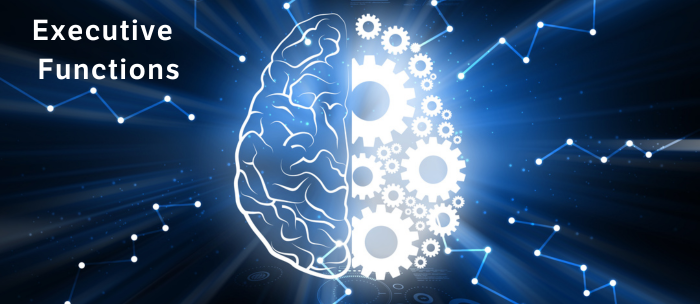
During adolescence, the prefrontal cortex of the brain goes through a significant change as it gets rid (via neural pruning) of processes the individual no longer requires and develops the brain functions that are needed in adulthood. During this time, there are processes that an adolescent is unable to do; however, unless there is a specific sorder that prevents an individual from doing this, most students are unable to acquire these cognitive skills unless specifically taught and being required to demonstrate these skills. Executive Functions have been described as like an air traffic control tower at a busy airport. Another description is that brain functions are managed by an executive leader in a large, busy company.
Throughout school (and in particular, the last few years of an academic career at school) Executive Functions are required to excel in school. When there is a genuine difficulty in the cognitive area, there can be a delay in identifying this as high abilities tend to mask difficulties and vice versa.
Executive Functions include the following: Response Inhibition (the capacity to think about consequences before acting); Working Memory (holding information in memory while performing complex tasks); Emotional Control (being able to control emotions & direct behaviour in response to these emotions); Flexibility (being able to change plans when circumstances change); Sustained Attention (being able to withstand distractions); Task Initiation (the ability to begin a task without procrastinating); Metacognition (to think about one's thinking; to solve problems); Persistence (to stay working at something until a specific goal is achieved); Time Management (determining and allocating available time to complete a task); Prioritizing (planning & deciding on the most important task to be completed);and Organization (the ability to create ways of managing a range of information, materials or tasks).
If any of these tasks are missing, the tricky part is determining what is normal adolescent brain change and what are Executive Function deficits. The best way to decide the difference is to explore if this skill has always been absent or if it is just a temporary skill deficit – in which case, this might be due to cognitive changes in the brain during adolescence,
Either way, students need to implement these Executive Function skills to succeed academically while at school. For a while, adults may need to act as their adolescents' Prefrontal Cortex, showing them HOW to do something. It is important not to do things for students (as this undermines their confidence) but teaching and showing students how to do something can be beneficial.
© Michele Juratowitch
michele@clearingskies.com.au